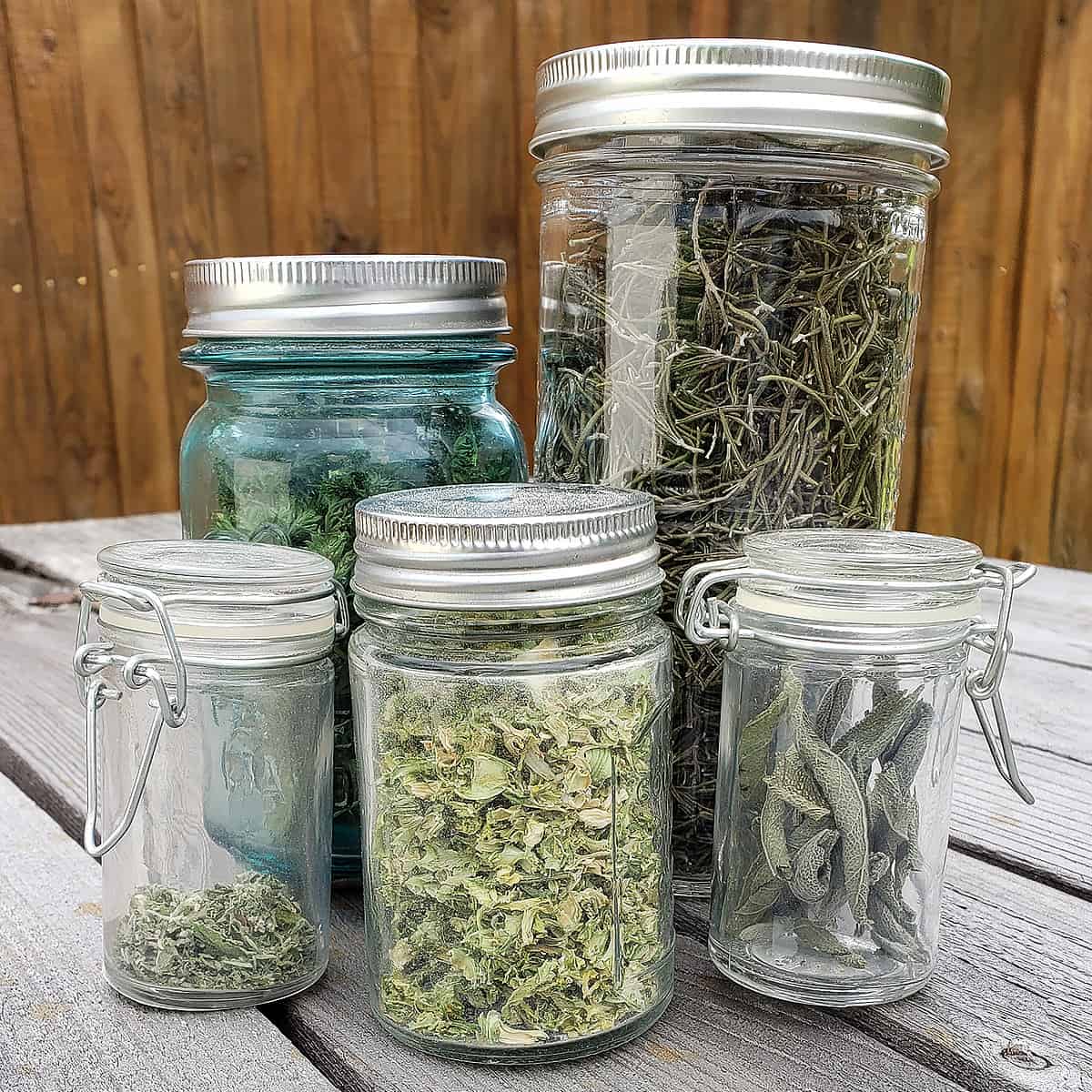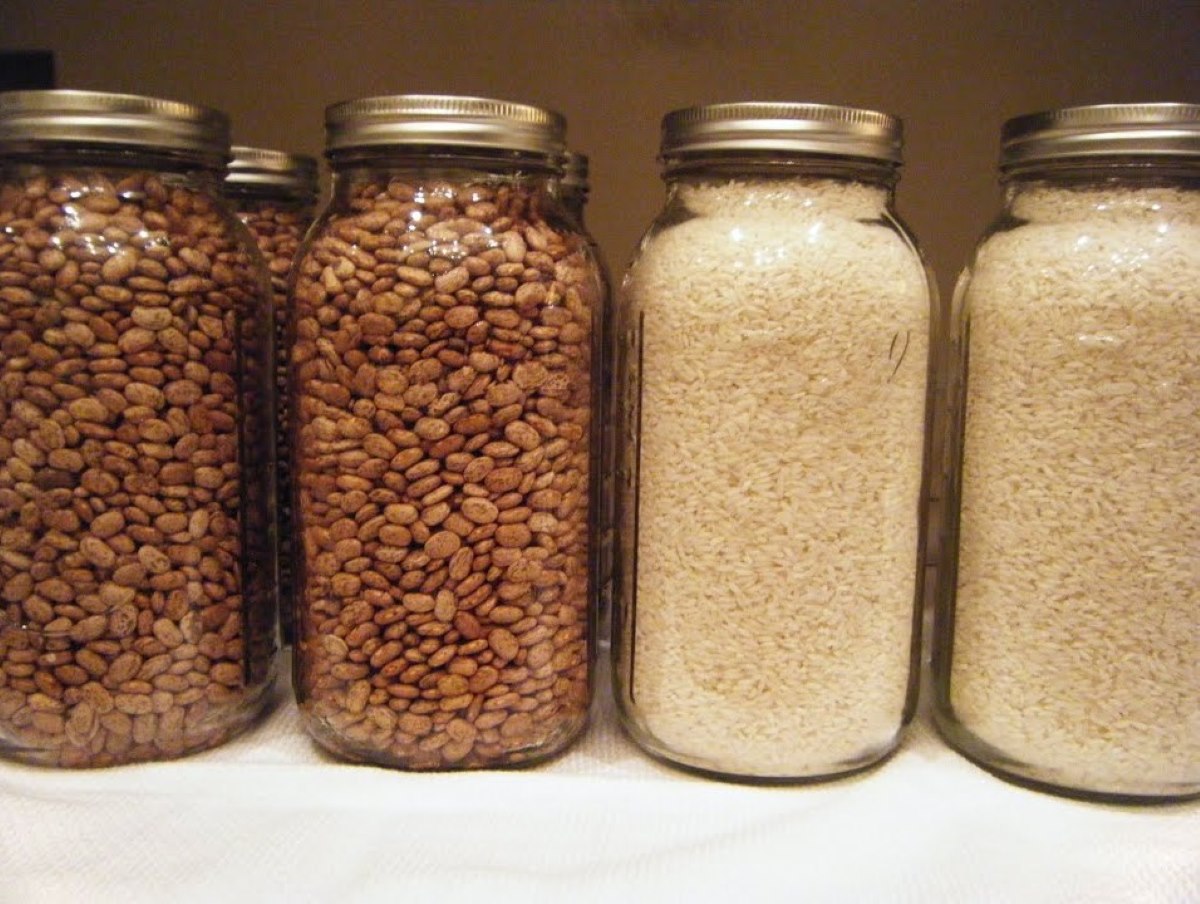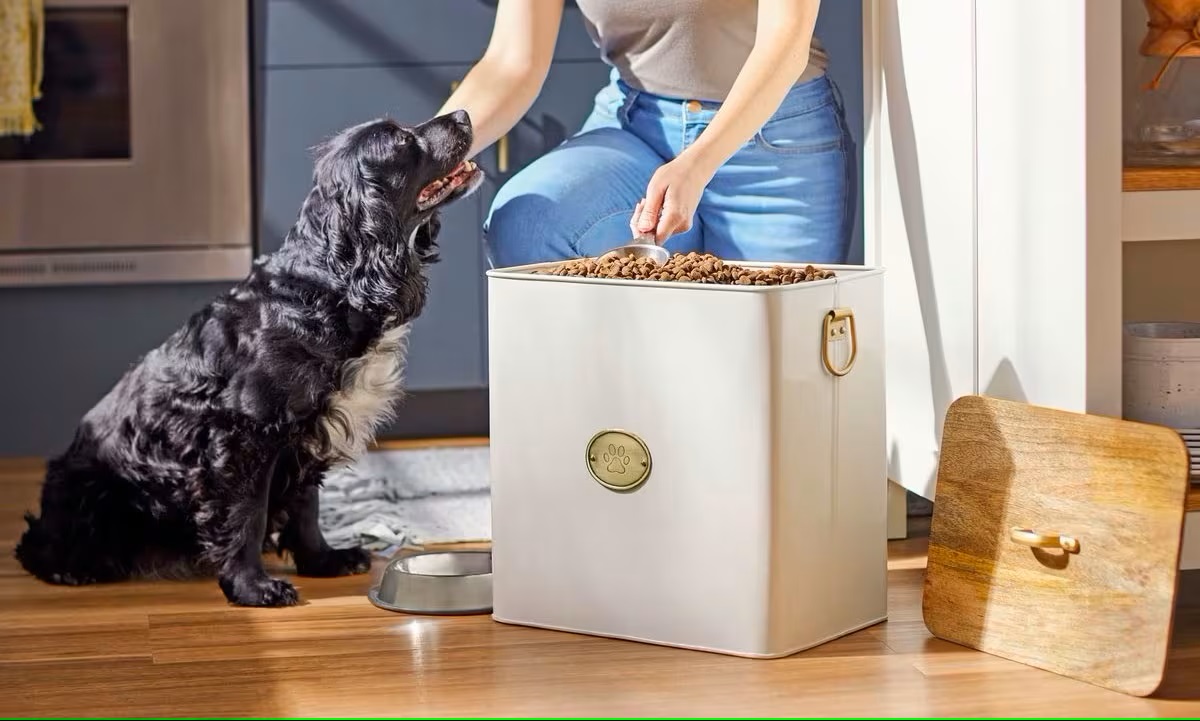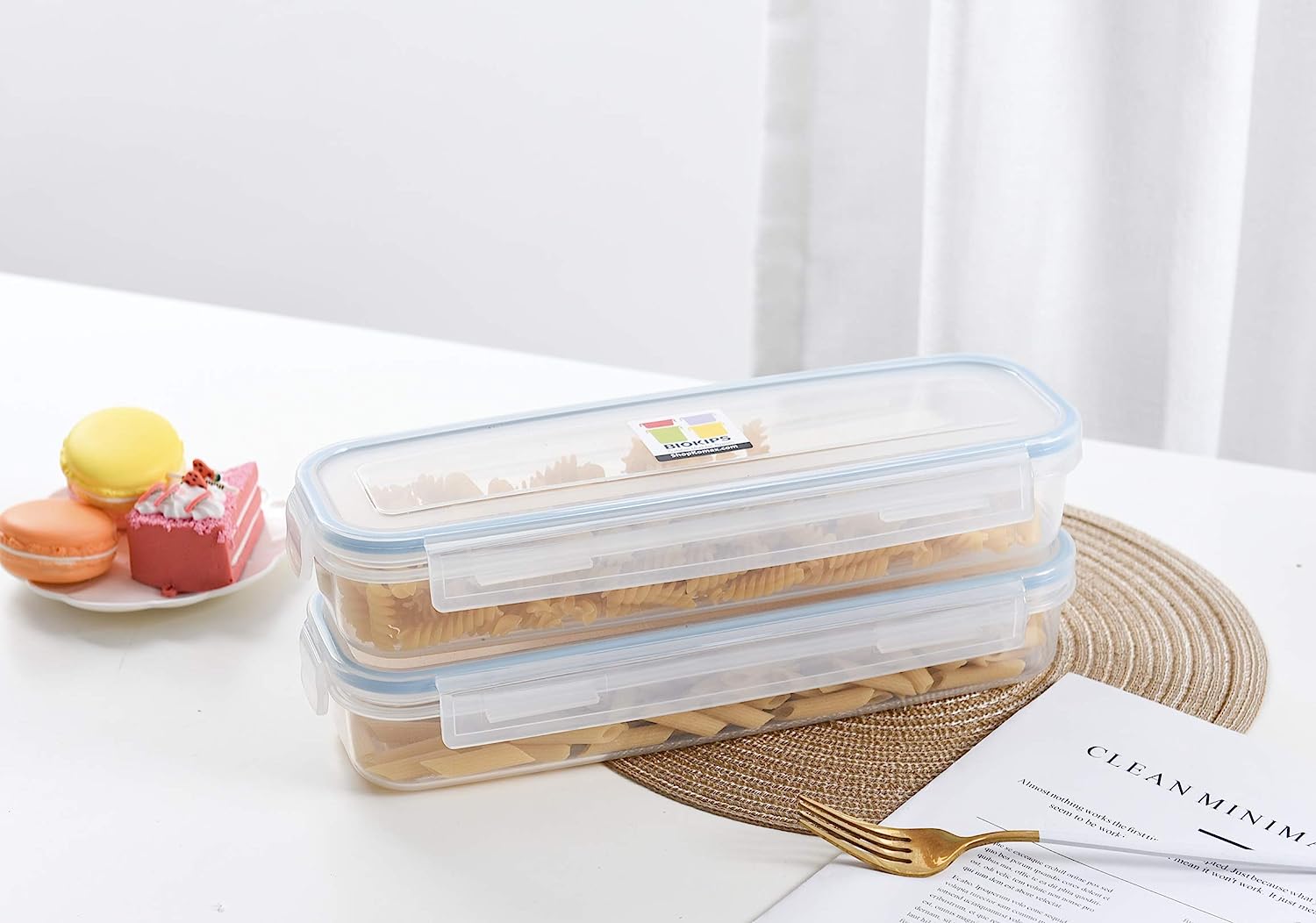

Articles
How To Store Dried Herbs Long Term
Modified: February 7, 2024
Learn effective methods and tips for storing dried herbs long term. Discover the key to preserving herbs for future aroma-filled recipes in this insightful articles.
(Many of the links in this article redirect to a specific reviewed product. Your purchase of these products through affiliate links helps to generate commission for Storables.com, at no extra cost. Learn more)
Introduction
Welcome to the world of dried herbs! Drying herbs is a fantastic way to preserve their freshness and flavor for an extended period. Whether you’ve grown your own herbs or purchased them from a local market, knowing how to store dried herbs long term is essential to maintain their potency and quality.
When it comes to dried herbs, proper storage plays a crucial role in maximizing their shelf life. By following simple guidelines, you can ensure that your herbs retain their fragrance, flavor, and potency, allowing you to enjoy their delightful goodness for months or even years to come.
In this article, we will guide you through the process of choosing the right herbs, selecting appropriate storage containers, determining ideal storage conditions, and various methods to store your dried herbs long term. So, let’s dive in and explore the wonderful world of preserving dried herbs!
Key Takeaways:
- Choose high-quality, organic, and whole dried herbs for long-term storage. Consider culinary preferences, experiment with new varieties, and ensure proper drying before storing to maintain freshness and flavor.
- Opt for airtight, dark-colored containers and create ideal storage conditions with proper ventilation, stable temperatures, and minimal light exposure. Consider vacuum sealing or freezing for extended herb freshness. Regularly monitor and check for spoilage to maintain high-quality dried herbs.
Read more: How To Store Dry Milk Long Term
Choosing Dried Herbs
When it comes to choosing dried herbs for long-term storage, it’s important to start with high-quality herbs. Whether you’ve dried them yourself or purchased them, here are a few tips to consider:
- Go for Freshness: Opt for herbs that were harvested at their peak and dried properly to retain maximum flavor and aroma. Look for vibrant colors and avoid herbs that appear faded or dull.
- Organic and Pesticide-Free: Whenever possible, choose organic herbs to avoid exposure to harmful pesticides and chemicals. This ensures that you’re only consuming pure and natural herbs.
- Choose Whole Leaves: Whole leaves tend to retain their flavor and aroma better than crushed or powdered herbs. They also provide more versatility when it comes to using them in recipes.
- Consider Culinary Preferences: Select herbs based on your culinary preferences and the dishes you typically cook. Keep in mind the flavors that complement your favorite recipes to make the most of your herb collection.
- Experiment with New Varieties: Don’t be afraid to try new herbs and expand your palate. Dried herbs offer a wide range of flavors and aromas, so feel free to explore different varieties and experiment with new combinations.
By considering these factors, you can ensure that the dried herbs you choose for storage are of the highest quality, guaranteeing a delightful culinary experience whenever you use them.
Storage Containers
Choosing the right storage containers for your dried herbs is essential to maintain their freshness and potency. Here are a few factors to consider when selecting storage containers:
- Airtightness: Opt for containers that are completely airtight to prevent air and moisture from entering. This helps in preserving the flavor, aroma, and quality of the herbs for a longer period.
- Material: Look for containers made of glass or food-grade plastic. These materials do not impart any flavors or chemicals into the herbs and provide a safe and hygienic storage environment.
- Size: Consider the amount of dried herbs you plan to store and choose containers that provide enough space to accommodate them. Smaller herbs may require smaller containers to avoid excess air exposure.
- Dark-Colored: Opt for containers that are dark or opaque in color. This helps in preventing light exposure, which can cause herbs to degrade faster.
- Sealability: Ensure that the containers have tight-fitting lids or closures to create a secure seal. This helps in keeping the herbs fresh and prevents any contamination.
You can find a wide range of suitable storage containers in stores or online, specifically designed for storing herbs. Mason jars, glass containers with rubber seals, and food-grade plastic containers with tight lids are all great options for storing dried herbs long term.
Remember to clean and dry your storage containers thoroughly before using them to prevent any potential contamination or moisture buildup.
Once you have the right storage containers in place, you’re ready to create an ideal environment for your dried herbs and ensure their long-term freshness and quality.
Ideal Storage Conditions
Creating the ideal storage conditions for your dried herbs is crucial to maintain their potency and flavor. Here are the key factors to consider:
- Dark and Cool Location: Store your dried herbs in a dark and cool area, away from direct sunlight or any sources of heat. Sunlight and heat can degrade the herbs and cause them to lose their flavor and aroma.
- Avoiding Humidity: Moisture is the enemy of dried herbs. Ensure that the storage area is dry, as excess humidity can lead to mold growth and spoilage. Avoid storing herbs in areas like the kitchen, where the humidity tends to be higher.
- Proper Ventilation: Although you want to keep herbs away from moisture, it’s also important to provide proper ventilation to prevent any moisture buildup. Ensure that the storage area has good airflow to keep the herbs fresh.
- Stable Temperature: Dried herbs prefer a stable temperature. Aim for a storage area with a temperature between 50°F (10°C) and 70°F (21°C). Avoid areas with extreme temperature fluctuations.
By following these guidelines, you can create an ideal storage environment that will help preserve the flavor, aroma, and quality of your dried herbs.
Additionally, it’s important to note that the storage conditions mentioned above are ideal for long-term storage. If you frequently use your dried herbs for cooking, you can keep a small portion in a more accessible location, such as your spice rack or kitchen cabinet, while ensuring the majority of your stash is stored in a dark, cool, and dry place.
Now that you know the ideal storage conditions, let’s explore additional tips to help you ensure the longevity of your dried herbs.
Avoiding Moisture
Moisture is the enemy of dried herbs, as it can lead to mold growth, spoilage, and a loss of flavor and potency. Here are some tips to help you avoid moisture when storing your dried herbs:
- Ensure Proper Drying: Before storing your herbs, make sure they are completely dry. Any leftover moisture can lead to mold or spoilage. Properly drying your herbs before storage is crucial for long-term preservation.
- Use Desiccants: Desiccants, such as silica gel packets or rice, can help absorb any excess moisture in your storage containers. Place a desiccant in the container with your dried herbs to keep them dry and free from moisture-related issues.
- Avoid Storing in the Refrigerator: Although the refrigerator is known for its ability to preserve freshness, it is not an ideal storage location for dried herbs. The fluctuating temperatures and humidity levels inside the fridge can cause condensation and spoil the herbs.
- Keep Away from Moisture-Prone Areas: Store your dried herbs away from areas with high humidity, such as the kitchen sink, dishwasher, or near windows. Avoid storing herbs in the vicinity of any water source to minimize the risk of moisture exposure.
- Check for Moisture Regularly: Even with proper storage, it’s essential to periodically check your containers for any signs of moisture. If you notice condensation or any dampness, remove the herbs, dry the container thoroughly, and ensure the herbs are completely dry before returning them to storage.
By taking these precautions and ensuring that your dried herbs remain dry throughout the storage period, you can keep them fresh and flavorful for an extended time.
In the next section, we will discuss how to minimize exposure to light, another factor that can affect the quality of your dried herbs.
Read more: How To Store Dry Goods Long Term
Minimizing Exposure to Light
Exposure to light can cause the deterioration of dried herbs, resulting in a loss of flavor, aroma, and color. Here are some tips to minimize exposure to light when storing your dried herbs:
- Choose Dark-Colored Containers: Opt for dark-colored storage containers, such as amber glass jars or opaque plastic containers. These containers help block out light and protect the herbs from its harmful effects.
- Store in a Dark Area: Find a storage location that is dark or shielded from direct sunlight. A pantry or a cabinet away from windows is an ideal spot. Avoid storing dried herbs on open shelves or countertops where they are exposed to light throughout the day.
- Label Containers Appropriately: Label your storage containers with the name and date of the dried herbs. This way, you can easily locate the specific herb you need without having to expose the other herbs to light for an extended period.
- Refrain from Keeping Containers Open: Keeping the storage containers closed when not in use helps minimize light exposure. Only open the container when you need to retrieve the herbs, and promptly close it afterward.
By implementing these practices, you can effectively minimize the exposure of your dried herbs to light and preserve their flavor, aroma, and quality over an extended period.
Next, let’s discuss the importance of temperature considerations when storing dried herbs long term.
Store dried herbs in airtight containers away from light, heat, and moisture to maintain their flavor and potency for long-term use.
Temperature Considerations
Proper temperature control is key to maintaining the quality and longevity of your dried herbs. Here are some temperature considerations to keep in mind when storing your herbs:
- Avoid Extreme Temperatures: Dried herbs should be stored in an area with a stable temperature, away from direct heat sources and extreme temperature fluctuations. Avoid storing herbs near the stove, oven, or any appliances that generate heat.
- Optimal Temperature Range: The ideal temperature range for storing dried herbs is between 50°F (10°C) and 70°F (21°C). This moderate temperature range helps preserve the flavors, aromas, and medicinal properties of the herbs.
- Consistency is Key: Rapid fluctuations in temperature can cause condensation inside the storage containers, leading to moisture buildup and potential spoilage. Aim for a storage area with a consistent temperature to ensure the herbs remain dry and fresh.
By maintaining a stable and moderate temperature in your storage area, you can help extend the shelf life of your dried herbs and ensure their optimal flavor and potency.
Next, let’s discuss the importance of labeling and organization to keep your dried herbs well-arranged and easy to access.
Labeling and Organization
When it comes to storing and maintaining your dried herb collection, labeling and organization are essential for easy access and efficient usage. Here are some tips for labeling and organizing your herbs:
- Clear and Legible Labels: Label each storage container with the name of the herb and the date of storage. Use clear and legible labels to ensure you can easily identify the herbs, especially if you have multiple varieties stored.
- Alphabetical Order: Arrange your storage containers in alphabetical order to make it easier to locate specific herbs. This organization method saves time and ensures that you can easily find the herb you need, even when your collection grows over time.
- Separate Storage for Different Herbs: If you have a large collection of dried herbs, consider dedicating separate storage areas for different herb families or categories. For example, you can have one section for culinary herbs, another for medicinal herbs, and so on.
- Consider Usage Frequency: If you have herbs that you use more frequently, keep them in a more accessible location. This way, you won’t need to disrupt the rest of your collection every time you need a specific herb.
- Keep Like with Like: If you have multiple containers of the same herb, store them together to maintain consistency. This helps prevent confusion and ensures that you use up older herbs before opening a new container.
By implementing a labeling and organizing system, you can easily access and use your dried herbs, saving time and effort in your culinary or medicinal endeavors.
Next, let’s explore the option of vacuum sealing as an additional method to prolong the shelf life of your dried herbs.
Vacuum Sealing
Vacuum sealing is an effective method to prolong the shelf life of your dried herbs. This process involves removing the air from the storage container to create a vacuum seal, which helps preserve the herbs’ freshness and flavor. Here’s how you can vacuum seal your dried herbs:
- Choose a Vacuum Sealer: Invest in a vacuum sealer machine specifically designed for food storage. These machines come with sealing bags or canisters that create an airtight seal.
- Ensure Herb Dryness: Before vacuum sealing, make sure your dried herbs are completely dry to avoid any moisture buildup inside the package. Moisture can lead to mold growth and spoilage.
- Portion the Herbs: Divide your dried herbs into smaller portions that you typically use for a specific recipe or time frame. This way, you can open and use one portion at a time without exposing the rest to air and moisture.
- Package and Seal: Place the portioned herbs in a vacuum sealing bag or canister. Follow the instructions provided with your vacuum sealer to create a proper seal. The machine will remove the air, creating a vacuum seal to preserve the herbs.
- Label and Store: Once vacuum-sealed, label the package with the name and date. Store the vacuum-sealed bags or canisters in a cool, dry, and dark area to maintain the quality of the herbs.
Vacuum sealing can significantly extend the shelf life of your dried herbs, keeping them fresh and flavorful for an extended period. It helps protect the herbs from air exposure and prevents moisture absorption, preserving their potency and quality.
Remember to store the vacuum-sealed herbs properly and only open the sealed package when you’re ready to use them. This will ensure maximum freshness and flavor retention.
In the next section, we will explore another method of preserving dried herbs: freezing.
Read more: How To Store Dry Ice Long Term
Freezing Dried Herbs
Freezing is another excellent method for preserving the freshness and flavor of your dried herbs. Although freezing won’t completely halt the degradation process, it can significantly slow it down, allowing you to enjoy your herbs for an extended period. Here’s how you can freeze dried herbs:
- Ensure Herb Dryness: Just like with vacuum sealing, make sure your dried herbs are completely dry before freezing. Any moisture in the herbs can lead to freezer burn or spoilage.
- Portion the Herbs: Divide your dried herbs into small portions that you can easily use in recipes. This way, you can thaw and use one portion at a time, keeping the remaining herbs frozen and protected.
- Use Air-Tight Containers: Place the portioned herbs in air-tight containers, such as freezer-safe resealable bags or containers. Remove as much air as possible from the bags or containers before sealing to minimize the risk of freezer burn.
- Label and Date: Label each container with the name of the herb and the date of freezing. This helps you keep track of the herbs and ensures you use them within a reasonable time frame.
- Freeze Properly: Place the containers in the freezer, ensuring they are kept in a stable and cold environment. Avoid placing them near the freezer door or in areas with temperature fluctuations.
- Thawing and Using: When you need to use the frozen herbs, simply remove the desired portion from the freezer and let it thaw for a few minutes. You can then use the herbs in your recipes as you would with fresh herbs.
Freezing dried herbs is a convenient way to preserve their flavor and aroma, especially when you have a surplus of herbs or want to extend their shelf life. However, keep in mind that freezing can slightly alter the texture of the herbs, so they may not have the exact same appearance as freshly dried herbs.
By following these steps, you can successfully freeze your dried herbs and enjoy their delightful flavors in your dishes throughout the year.
Now that you know various methods for storing dried herbs long term, let’s explore how you can monitor and check for any signs of spoilage.
Monitoring and Checking for Spoilage
While proper storage techniques can help extend the shelf life of dried herbs, it’s important to monitor and check for any signs of spoilage periodically. Here are some tips to help you detect and prevent spoiled herbs:
- Regular Inspection: Take some time every few months to inspect your stored dried herbs. Check for any signs of discoloration, moisture, mold, or off-putting odors. If you notice any abnormalities, discard the affected herbs to prevent contamination.
- Sensory Evaluation: Before using any dried herb from your storage, perform a sensory evaluation. Assess the color, aroma, and taste of the herb. If you notice any significant changes, such as a loss of color or a stale aroma, it may be an indication of spoilage.
- Storage Rotation: To ensure you use your dried herbs before they become stale or lose their potency, practice a rotation system. As you replenish your stock, move the older herbs to the front and place the newer ones at the back. This way, you’ll always use the herbs in the order of their freshness.
- Proper Sealing: After every use, make sure to seal the storage containers tightly to prevent air and moisture from entering. Even a small amount of exposure to air can lead to herbs losing their flavor and becoming stale.
- Quality Control: Be mindful of the quality of your dried herbs when purchasing or drying them. If you notice any signs of poor quality, such as insects, debris, or excessive moisture, discard those herbs and ensure you’re sourcing from reliable and reputable suppliers.
By regularly monitoring and checking your dried herbs for any signs of spoilage, you can maintain a collection of high-quality, flavorful herbs for an extended period.
Now that you’re equipped with knowledge on how to store dried herbs long term, you can preserve the freshness, flavors, and aromas of your herbs, ensuring that they enrich your culinary creations and bring delight to your senses for months or even years to come.
Is there anything else you’d like to know?
Conclusion
Properly storing dried herbs long term is essential to preserve their flavors, aromas, and potency. By following a few simple guidelines, you can ensure that your collection of dried herbs remains fresh and vibrant, ready to enhance your culinary creations and provide a burst of flavor in your recipes.
Start by choosing high-quality dried herbs that have been properly harvested and dried. Look for freshness, vibrant colors, and organic options whenever possible. Consider your culinary preferences and experiment with different herb varieties to expand your palate.
Selecting the right storage containers is crucial in maintaining the freshness of your dried herbs. Opt for airtight, glass or food-grade plastic containers that are dark or opaque to minimize light exposure. Keep in mind the size of your herb collection and choose containers that provide enough space for proper storage.
Creating the ideal storage conditions for your herbs involves considering factors such as darkness, cool temperatures, proper ventilation, and avoiding moisture. Find a dry, dark, and cool area to store your herbs and ensure a consistent temperature to prolong their shelf life.
Avoiding moisture and minimizing exposure to light are key in preserving the quality of your dried herbs. Make sure your herbs are completely dry before storing them to prevent mold growth and spoilage. Choose dark-colored containers, label them properly, and avoid opening them unnecessarily to minimize light exposure.
Additionally, consider vacuum sealing or freezing your dried herbs to extend their freshness. These methods help protect the herbs from air, moisture, and light, thus preserving their potency and flavors for a longer period.
Regularly monitor and check your stored herbs for signs of spoilage, and discard any herbs that show discoloration, mold, or off-putting odors. Use a rotation system to ensure you consume herbs in the order of their freshness and maintain quality control when sourcing or drying your herbs.
By implementing these guidelines and paying attention to proper storage techniques, you can enjoy the full flavor and aroma of your dried herbs for an extended period. So go ahead, explore the wonderful world of dried herbs, and elevate your culinary creations with their delightful essence!
If you have any further questions about storing dried herbs or any other topic, feel free to ask. Happy herb storing and cooking!
Frequently Asked Questions about How To Store Dried Herbs Long Term
Was this page helpful?
At Storables.com, we guarantee accurate and reliable information. Our content, validated by Expert Board Contributors, is crafted following stringent Editorial Policies. We're committed to providing you with well-researched, expert-backed insights for all your informational needs.














0 thoughts on “How To Store Dried Herbs Long Term”